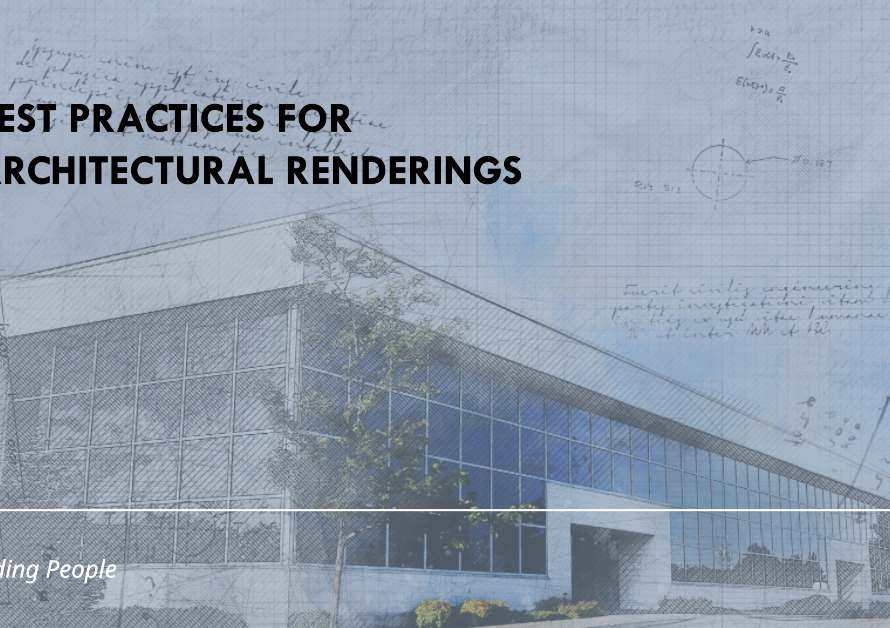
Table of Contents
- Introduction to the 30th Street Station Redevelopment
- Historical Context: The Evolution of 30th Street Station
- Current Redevelopment Plans: Vision and Goals
- The Role of Collaboration: Stakeholders and Partnerships
- Economic Impact: Revitalizing Philadelphia’s Urban Landscape
- Sustainability Initiatives: Building a Greener Future
- Community Engagement: Ensuring a Voice for Local Residents
- Timeline and Milestones: From Concept to Reality
- Conclusion: The Future of 30th Street Station
Introduction to the 30th Street Station Redevelopment
The 30th Street Station, a pivotal landmark in Philadelphia, serves as a crucial node within the city’s transportation network. Designed by renowned architect Frank Furness, the station opened its doors in 1933 and has since played a significant role in connecting commuters to regional rail services as well as long-distance travel. Historically, it has been a symbol of progress and connectivity, and its architectural grandeur reflects the industrial and social advancement of Philadelphia in the early 20th century. Recognizing its importance, stakeholders have initiated a comprehensive redevelopment project aimed at rejuvenating the station and enhancing its role within the urban landscape.
The redevelopment initiative aims to modernize the facilities while preserving the station’s historical charm and significance. Key goals of the project include improving passenger amenities, increasing accessibility, and integrating contemporary technologies to streamline operations. Moreover, the vision extends beyond mere renovations; it is about transforming the surrounding areas into vibrant hubs of activity that cater to both users and the community at large. This includes the potential development of office spaces, retail outlets, and public parks, which will create a thriving environment around the station.
Various stakeholders are involved in the 30th Street Station redevelopment, including the City of Philadelphia, Amtrak, and private developers, all working collaboratively to ensure sustainable growth. This partnership emphasizes a shared aspiration for the station to evolve into a central hub that not only facilitates transportation but also stimulates economic development and urban living. By focusing on sustainable practices and community engagement, the project seeks to establish a dynamic sense of place, further enriching Philadelphia’s vibrant urban identity. As this redevelopment unfolds, the vision remains clear: to enhance the station’s historical legacy while paving the way for future generations.
Historical Context: The Evolution of 30th Street Station
The history of 30th Street Station in Philadelphia is a testament to the city’s evolving architectural and urban landscape. Opened in 1933, this monumental structure was designed by the architectural firm of Graham, Anderson, Probst & White, reflecting the Beaux-Arts style prevalent during that era. In the subsequent decades, 30th Street Station emerged as a crucial node in the broader transportation network of the Mid-Atlantic region, facilitating passenger travel and freight transport alike. Its strategic location allowed Philadelphia to solidify its role as a key hub connecting various rail lines, including the Pennsylvania Railroad and Amtrak, directly influencing the city’s growth and economic vitality.
Throughout the years, 30th Street Station has witnessed several significant historical periods. During World War II, for instance, it played a vital role in serving the influx of military personnel traveling across the nation. Additionally, the architectural grandeur of the station not only reflects the cultural aspirations of the time but also symbolizes the optimism associated with the American transportation system in the early 20th century.
However, like many urban infrastructures, 30th Street Station faced periods of decline, particularly in the latter half of the 20th century, as car travel became more accessible and rail travel decreased. Multiple revitalization attempts were made, and while some were met with limited success, others revealed the importance of preserving historical structures while equipping them for modern usage. Lessons learned from these efforts laid the groundwork for the current redevelopment initiatives. Proposals now prioritize not just practical improvements but also the integration of contemporary amenities that respect the station’s historical significance, thus ensuring that 30th Street Station continues to play an essential role in Philadelphia’s transportation narrative.
Current Redevelopment Plans: Vision and Goals
The redevelopment of Philadelphia’s 30th Street Station represents a comprehensive vision aimed at transforming one of the city’s key transportation hubs into a modern and integrated urban space. The plans, spearheaded by a coalition of city officials, architects, and urban planners, prioritize architectural designs that reflect both the historical significance of the station and the necessity for contemporary functionality. A key feature of the redevelopment is the intention to elevate the passenger experience through improved amenities and enhanced services, ensuring that visitors and commuters can navigate the station with ease and comfort.
Accessibility is another cornerstone of the redevelopment initiative. The design includes the creation of universal access pathways and the installation of state-of-the-art escalators and elevators. Such infrastructural improvements are aimed at accommodating individuals with disabilities while also streamlining movement for all passengers. Furthermore, the plan incorporates the expansion of waiting areas and ticketing facilities, facilitating a smoother flow of urban transit users.
Sustainability plays a pivotal role in the collective vision for 30th Street Station. The project envisions the integration of green building practices, such as energy-efficient systems, the use of recycled materials, and the implementation of water conservation methods. Ensuring that the redevelopment aligns with Philadelphia’s broader environmental goals is essential in fostering a community-oriented atmosphere amidst urban growth.
In addition, the anticipated revitalization of 30th Street Station is expected to significantly impact surrounding neighborhoods and local businesses. By enhancing this transportation hub, the project aims to stimulate economic development, attract tourists, and encourage local patronage. This interconnected approach promises a revitalized urban landscape that not only addresses the practical aspects of mobility but also enriches the community fabric of Philadelphia.
The Role of Collaboration: Stakeholders and Partnerships
The redevelopment of Som’s 30th Street Station represents a significant urban transformation for Philadelphia, with collaboration among various stakeholders playing a pivotal role in its success. Key participants include government agencies, local businesses, community organizations, and transit authorities. Each of these stakeholders contributes unique perspectives and resources, enhancing the project’s potential for success and ensuring it meets the needs of a diverse group of residents and visitors.
Government agencies are often at the helm of redevelopment initiatives, providing essential oversight, funding, and regulatory frameworks. Their involvement is critical in establishing standards that promise safety, sustainability, and accessibility. Local businesses, on the other hand, bring market insights and economic vitality to the table. Their participation ensures that the redevelopment aligns with the local economy’s needs, promoting a thriving commercial environment that supports job creation and enhances community engagement.
Community organizations serve as vital links between the project and the residents it serves. They advocate for community interests, ensuring that redevelopment plans reflect the desires and input of the local population. Effective collaboration among these groups fosters a sense of shared ownership and collective responsibility towards the project, promoting a partnership that inspires confidence among stakeholders and residents alike.
Transit authorities, responsible for the integration of public transportation with the station’s redevelopment, play a crucial role in enhancing urban mobility. Their expertise is central to creating an inclusive transportation system that meets current demands and anticipates future growth. Collaboration between transit authorities and other stakeholders lays the groundwork for a cohesive approach to mobility that connects various city regions seamlessly.
The synergy generated through these partnerships and collaborations not only enhances the quality of the redevelopment project but also fosters a strong sense of community. By actively involving diverse stakeholders, the Som’s 30th Street Station redevelopment initiative outlines a framework for sustainable urban transformation that emphasizes inclusivity and shared goals.
Economic Impact: Revitalizing Philadelphia’s Urban Landscape
The redevelopment of Som’s 30th Street Station is poised to significantly enhance the economic landscape of Philadelphia. By reimagining this iconic transportation hub, stakeholders anticipate a surge in job creation, both during the construction phase and in the subsequent operational period. The construction process alone is expected to generate thousands of jobs, offering a mixture of temporary and permanent positions that cater to a diverse range of skill sets. This employment opportunity is vital for the local community, particularly in a region where unemployment has been a concern.
Moreover, the revitalization of 30th Street Station is projected to attract increased tourism to Philadelphia. By upgrading facilities, improving accessibility, and enhancing the overall visitor experience, the station will likely become a primary attraction for both domestic and international travelers. Enhanced tourism can spur growth in surrounding neighborhoods, boosting local businesses and stimulating economic activity through increased spending in retail, dining, and entertainment venues.
The redevelopment project also aims to encourage the growth of ancillary services, which can complement the transportation infrastructure. For instance, businesses related to travel, lodging, and tourism services will benefit from the influx of visitors, creating a multiplier effect that strengthens the local economy. Additionally, improved connectivity in the area will facilitate access to employment opportunities across the city, fostering greater workforce participation.
Conversely, challenges may arise as well. Gentrification is a potential concern as improved infrastructure could lead to increased property values and displacement of existing residents. Moreover, the ongoing need for a balanced approach to development must be addressed to ensure that the benefits of the revitalization extend equitably throughout the community. Addressing these challenges will be vital to realizing the full economic potential of the 30th Street Station project, thereby fulfilling its promise in transforming Philadelphia’s urban landscape.
Sustainability Initiatives: Building a Greener Future
As the Som’s 30th Street Station redevelopment project moves forward, a heightened focus on sustainability is at the heart of its planning and execution. The vision is to create a space that not only meets the needs of the present but also prioritizes environmental stewardship for future generations. By utilizing eco-friendly construction materials, developers are actively reducing the ecological footprint associated with building activities. These materials often include recycled components, low-VOC (volatile organic compound) products, and sustainably sourced resources, which together contribute to a healthier urban environment.
Furthermore, the inclusion of energy-efficient systems within the redevelopment plans underscores the commitment to sustainability. Innovative technologies such as solar panels and advanced energy management systems are expected to be integrated into the station’s infrastructure. These systems aim to reduce energy consumption significantly, which not only decreases operational costs but also minimizes greenhouse gas emissions typically associated with transit facilities. The implementation of such technologies reflects a broader trend in urban development towards achieving net-zero energy buildings.
In addition to structural sustainability, the redevelopment also emphasizes the creation of green spaces. Parks, gardens, and landscaped areas are planned to enhance biodiversity and provide essential recreational spaces for both residents and visitors. These green areas will not only improve air quality but also contribute to stormwater management, helping to mitigate flooding in urban settings. By prioritizing greenery, the redevelopment at 30th Street Station aligns with Philadelphia’s overall sustainability goals, fostering an environment that promotes well-being and ecological resilience.
Through these initiatives, the 30th Street Station redevelopment project serves as a model for sustainable urban development. It highlights the importance of integrating eco-friendly practices in urban planning, demonstrating that effective urban regeneration can lead to both economic revitalization and environmental preservation. As Philadelphia continues to grow, such sustainability initiatives will be pivotal in shaping a greener future for the city.
Community Engagement: Ensuring a Voice for Local Residents
Community engagement plays a crucial role in the redevelopment of Som’s 30th Street Station, providing local residents an opportunity to participate actively in shaping the future of their neighborhood. The project team has recognized that successful urban transformation cannot occur in isolation; instead, it thrives on the involvement and insights of those who live in proximity to the station. To facilitate this, a multifaceted approach to outreach and consultation has been established.
A series of outreach events have been organized, including community forums and information sessions that welcome residents to voice their opinions and share their concerns. These events serve as platforms for dialogue, where local residents are encouraged to express their needs, aspirations, and anxieties related to the upcoming changes. The team understands that transparent communication is essential, and thus they aim to create an environment where every voice is valued and considered.
In addition to public forums, collaborative workshops have been introduced to enhance community participation further. These interactive sessions focus on brainstorming ideas and co-designing aspects of the redevelopment. By fostering collaboration between residents and urban planners, the project team seeks to ensure that the design and features of the new development resonate with the community’s culture and lifestyle. The workshops are designed to be inclusive and easily accessible, thereby encouraging larger participation among diverse demographic groups.
Overall, the emphasis on community engagement reflects a commitment to addressing the unique needs of local residents. By implementing ongoing feedback loops, the project team can adapt and make informed decisions that align with the community’s desires. This dedication to collaboration not only enhances the redevelopment process but also contributes to building a sense of ownership among residents, ultimately leading to a more successful and harmonious urban transformation around Som’s 30th Street Station.
Timeline and Milestones: From Concept to Reality
The redevelopment of Som’s 30th Street Station represents a significant undertaking in Philadelphia’s urban transformation. This ambitious project began with initial planning phases in early 2020, when stakeholders first gathered to discuss the vision for a revitalized 30th Street Station. The early stages concentrated on community outreach and gathering input from local residents and businesses, which played a crucial role in shaping the redevelopment strategy.
By late 2020, the project’s conceptual designs were formally presented, marking a pivotal milestone. These designs encompassed not only enhancements to the station itself but also improvements to the surrounding infrastructure, including pedestrian access and green spaces. As 2021 progressed, the project moved into the detailed planning stages, which included rigorous environmental assessments and coordination with various regulatory agencies. By mid-2021, a comprehensive timeline was established, outlining key construction phases and funding mechanisms.
Construction officially commenced in early 2022, with a focus on initial site preparations and utility upgrades. Significant progress was made in the first half of 2022, leading to the completion of foundational work by fall 2022. However, as with many large-scale projects, unexpected challenges arose. Supply chain disruptions and labor shortages led to projected delays, pushing back some key milestones. Throughout this period, project managers were committed to maintaining transparent communication with the public, frequently updating the community on progress and timelines via public forums and online platforms.
Looking ahead to 2023, the project aims to reach its next critical stage, with expectations for substantial structural work to be completed by late summer. As we move closer to anticipated completion in early 2024, continued updates will be essential to keep the community informed and engaged in this significant transformation of Philadelphia’s urban landscape.


Conclusion: The Future of 30th Street Station
As Philadelphia embarks on the transformative journey of redeveloping 30th Street Station, it engages in a vital conversation about urban revitalization and the city’s evolving identity. The station has long served as a critical transportation hub, connecting travelers and local residents alike, but its potential extends far beyond that role. By integrating modern amenities, enhancing accessibility, and preserving historical elements, the redevelopment aims to create a seamless blend of functionality and community space.
One of the most significant aspects of this initiative is its capacity to stimulate economic growth and attract investments in the surrounding areas. Thoughtful redevelopment of 30th Street Station is poised to enhance pedestrian-friendly pathways, foster retail opportunities, and create vibrant public spaces. These improvements will not only facilitate better transportation options but also promote social interaction and community engagement, reinforcing the station’s role as an essential part of Philadelphia’s urban fabric.
In addition, as we reflect on the expansion of infrastructure, it is crucial to address sustainability within the redevelopment process. Emphasizing environmentally friendly practices will enhance the station’s appeal and functionality while contributing to the city’s broader goals of reducing its environmental impact. Integrating green spaces and sustainable design elements will ensure that, as 30th Street Station evolves, it simultaneously fosters a more livable and ecologically responsible urban landscape.
Ultimately, the future of 30th Street Station encapsulates a broader vision for Philadelphia’s urban transformation. Its redevelopment will serve as a critical catalyst for change, reflecting the city’s commitment to preserving its rich history while also embracing modernity. As this project unfolds, it will undoubtedly shape the character of Philadelphia, creating a vibrant locale that embodies both progress and tradition.



